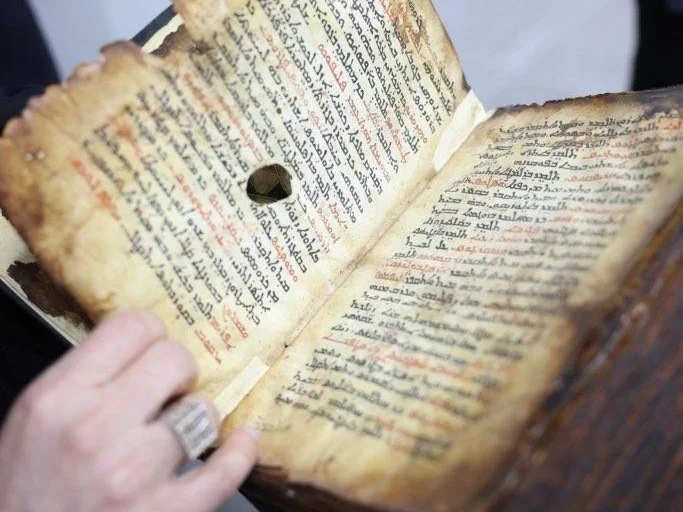Manuscripts and Monasteries
Ancient manuscripts require special handling.
Safeguarding Chaldean Heritage
In June, the Chaldean Community Foundation (CCF) celebrated the grand opening of the Bishop Ibrahim Library. Initially envisioned by Bishop Ibrahim, the library was brought to fruition by his successor, Bishop Francis Kalabat. Located at the new CCF-West campus, the library houses original, replicated, and digitized ancient Aramaic manuscripts.
The event reminded me of a brief but powerful stop during our trip to Iraq last February: the Gabriel Danbo Monastery in Ankawa, which serves as the headquarters of the Antonine Hormizdian Chaldean Monastic Order. The site is also home to St. Anthony the Great Church.
The monastery holds one of Iraq’s most significant private collections of ancient manuscripts, some dating as far back as the 8th century. Working alongside mostly European anthropology students, the monks have made tremendous efforts to catalog and digitize these manuscripts. The originals are stored in temperature-controlled, highly secure environments to ensure their preservation.
Gabriel Danbo, born in Turkey in 1774, revitalized the Rabban Hormizd Monastery near Alqosh with a focus on educating clergy and preserving ancient texts. He was martyred in 1832 by Kurdish forces, and his encased remains are on display at the monastery—one of the site’s more sobering features. Among the most striking artifacts is a copy of the Book of Esther from the 8th century, written in Syriac. The monastery also houses a parchment copy of the New Testament, handwritten in Nestorian script and dated to approximately 1200 A.D. Most of the collection, however, originates from Danbo’s lifetime in the 19th century.
Today, 11 monks reside at the monastery, balancing pastoral and spiritual duties with their preservation work. Sadly, vocations to this order have declined sharply over the past two decades.
Chaldean News had previously reported on Bishop Mikhael Najib Moussa of Mosul and his heroic efforts during the ISIS invasion to rescue, protect, and relocate priceless manuscripts. His work, together with that of the monks at Gabriel Danbo Monastery and now the founding of the Bishop Ibrahim Library, forms a triad of vital efforts to preserve the Chaldean language, culture, and history for future generations.

